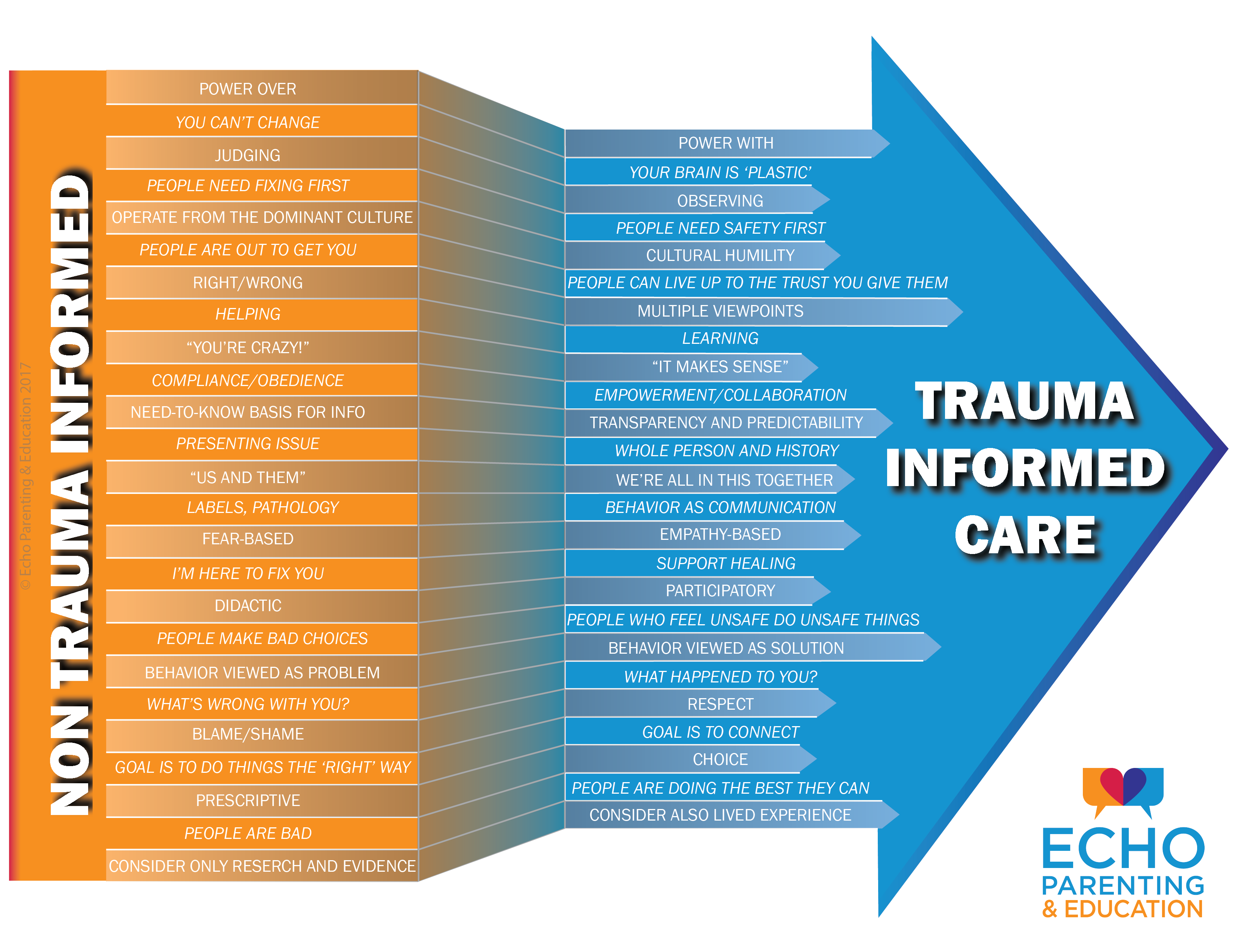Okay, we’ve got it: Not “what’s wrong with you?” but “What happened to you?” That explosive outburst? The child who cannot concentrate at school? The domestic violence survivor who is in a constant state of hyper-vigilance? Yes, most of us in family services are now able to recognize trauma-symptoms and respond with empathy… most of the time.
But what does it mean to be truly trauma-informed? For a start, it means that we have patience with others and ourselves as we seek to acquire the skills and attitudes of a trauma-informed practice. Calling out other people for being judgmental? Yes, this and many other ironies litter the path of learning this new language because we just so enjoy being right! It is easy to become smug or ‘preachy’ when we have all these wonderful new ‘dos and don’ts’ to crib from.
(click on the image for a larger version)
Echo has put together an info-graphic to help us see the difference between a trauma-informed and non-trauma-informed paradigm. We wanted to create a graphic that illustrated not a dichotomy of ‘right’ or ‘wrong’ but a journey – and a difficult journey at that, if we are willing to honest about ourselves and put in the work to transform attitudes we probably absorbed along with our mother’s milk.
How does it work? Take for example ‘labeling and pathologizing’. This is not just something we leave to the mental health professionals – we’ve all done it at one time or another: “They’re crazy… controlling… hyper… manipulative… have anger issues…”
Labeling is not just a matter of language – it’s an inability to look beneath the behavior to understand what that person is trying to communicate. Is the explosion about fear of losing control when losing control in the past has meant you got hurt? Is your kid’s cussing about trying to tell you, in the strongest terms they know, how strongly they feel? No one acts against their own self-interest, so if the behavior seems irrational or counter-productive there is something deeper going on, something you have not yet perceived.
Similarly, we can begin to shift our perspective and see that ‘problem behavior’ is actually a solution to the person who is engaging in it. Smoking and drinking provide temporary relief to unmanageable pain. Having children when you are not in a place to be able to support them or love them adequately may seem like a problem to social services, but to the person concerned this could be an attempt to build the loving family they never had. Obesity? Could be useful for repudiating any sexual overtures for those who have been sexually abused.
We hope that this graphic can get you thinking about your own journey toward becoming trauma-informed. If you would like to know more about childhood trauma and developing a trauma-informed practice, sign up for our “Working with Childhood Trauma” training here, or contact Azucena Ortiz for information about setting up a training for your organization.


Comments (0)